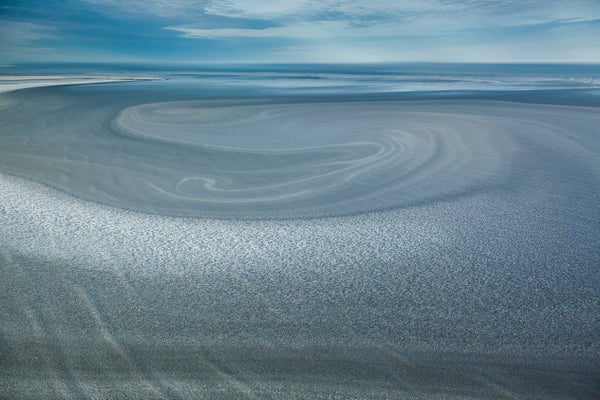CLIMATEWIRE | An unconventional method is helping scientists monitor the rapidly warming Arctic.
They’re using a fiber-optic telecommunications cable, buried in the seafloor off the North Slope of Alaska, to study underwater permafrost in the chilly Beaufort Sea.
The setup is simple — “it’s essentially a laser and a computer,” said Jennifer Frederick, a computational geoscientist at Sandia National Laboratories and one of the researchers working on the project.
On supporting science journalism
If you're enjoying this article, consider supporting our award-winning journalism by subscribing. By purchasing a subscription you are helping to ensure the future of impactful stories about the discoveries and ideas shaping our world today.
Here's how it works.
The existing cable consists of a bundle containing dozens of fibers, which transmit data through pulses of light. One fiber in the bundle happened to be “dark,” meaning it wasn’t in use, and was free for the scientists to repurpose for their studies.
The researchers found that they could shine a laser through the cable and send pulses of light running back and forth down the fiber. If the fiber happens to stretch or compress along the way, it changes the amount of time it takes for the light to run back up the cable. That tells the scientists that the fiber is under some sort of strain — which can indicate changes in the seafloor where it’s buried, such as areas where the sediments might contain more or less ice.
These measurements can help scientists map out the extent of the permafrost area at the bottom of the sea.
The laser also can indicate changes in temperature, Frederick added. The temperature of the cable affects the intensity of the light’s backscatter, a measurement of the way it reflects back in the direction it came from.
Continuous temperature monitoring “gives us an idea of what parts of the seafloor might be experiencing thaw and how quickly or rapidly that thaw is happening,” Frederick said.
She and other researchers working on the project presented some of their findings last week at the annual fall meeting of the American Geophysical Union, the world’s largest Earth and space science society.
Permafrost — a layer of frozen soil common in cold parts of the world — is a growing source of concern for climate scientists.
Large swaths of Arctic permafrost are beginning to thaw as the planet warms, releasing climate-warming carbon dioxide and methane into the atmosphere. Scientists worry these emissions could hasten the progression of global warming.
That’s why scientists are so concerned with keeping tabs on the Arctic’s thawing permafrost — it helps them estimate the greenhouse gases it's releasing into the air.
Much of the region’s permafrost is found on land, but scientists have discovered some layers of frozen sediments also exist at the bottom of the seas surrounding the Arctic coastline. These stretches of submarine permafrost are attracting more scientific attention.
Scientists can use other methods to study submarine permafrost. They could drill into the seafloor, drop sensors into the water from research ships or even repurpose data collected by other researchers for seismic monitoring purposes. But fiber optic cables present a new opportunity for more detailed and targeted kinds of research.
The current project is partly aimed at testing the method’s ability to provide accurate information about the region’s permafrost, said Brandon Herr, an intern at Sandia National Laboratories who conducted data analysis for the project.
“Testing its feasibility is another point of this study,” he said.
The project has been ongoing for more than four years, and it’s scheduled to continue for about another year and a half. For the first few years, the researchers had to visit the site about every three months to physically plug into the system and collect data. More recently, they’ve been able to set up a remote system that conducts continuous monitoring and transmits data via the internet.
It’s unlikely the area’s permafrost will experience dramatic changes in the next year and a half as the project continues, Herr said. But the measurements can help provide important benchmarks — “a flag,” he said — for future studies monitoring the region.
“As permafrost degrades, we should see some change,” Herr said.
Reprinted from E&E News with permission from POLITICO, LLC. Copyright 2023. E&E News provides essential news for energy and environment professionals.
